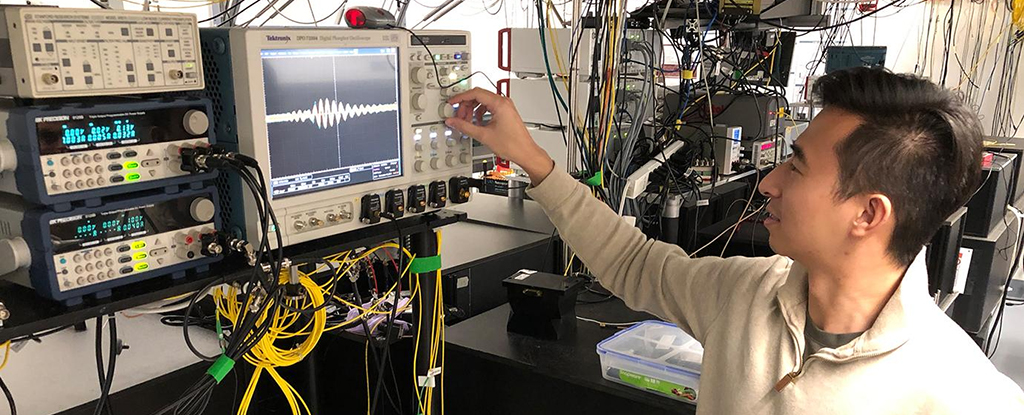Products You May Like
One of the major challenges in turning quantum technology from potential to reality is getting super-delicate quantum states to last longer than a few milliseconds – and scientists just raised the bar by a factor of about 10,000.
They did it by tackling something called decoherence: that’s the disruption from surrounding noise caused by vibrations, fluctuations in temperature, and interference from electromagnetic fields that can very easily break a quantum state,
“With this approach, we don’t try to eliminate noise in the surroundings,” says quantum engineer Kevin Miao, from the University of Chicago. “Instead, we trick the system into thinking it doesn’t experience the noise.”
By applying a continuous alternating magnetic field to a type of quantum system called a solid-state qubit, in addition to the standard electromagnetic pulses required to keep such a system under control, the team was able to ‘tune out’ unnecessary noise.
The researchers compare it to sitting on a merry go round – the faster you go, the less able you are to hear the noise of your surroundings, as it all blurs into one. In this case spinning electrons are the merry go round.
Using the new approach, the solid-state qubit system was able to stay stable for 22 milliseconds – four orders of magnitude or 10,000 times longer compared with previous efforts, though still less than a tenth of a blink of an eye.
 Researcher Kevin Miao. (David Awschalom)
Researcher Kevin Miao. (David Awschalom)
The qubit is the quantum version of a standard computer bit, but instead of only being able to code 1s and 0s, it can achieve a state of superposition that makes it far more powerful.
Decoherence is something of a nemesis for quantum scientists. Other attempts to reduce background noise have looked at perfectly isolating quantum systems – which is technically very challenging – or using the purest possible materials to build them – which can quickly get expensive.
The new approach could offer a more practical solution.
“This breakthrough lays the groundwork for exciting new avenues of research in quantum science,” says physicist David Awschalom, from the Argonne National Laboratory in the US.
“The broad applicability of this discovery, coupled with a remarkably simple implementation, allows this robust coherence to impact many aspects of quantum engineering. It enables new research opportunities previously thought impractical.”
The researchers say it should work in other fields of quantum physics too, without the need to adapt it too much – superconducting quantum bits and molecular quantum systems, for example, are other systems that could benefit. We’re talking about everything from supercomputers to unhackable internet, here.
Our quantum future is still some way off, but every scientific step forward gets us a little bit closer to it.
“There are a lot of candidates for quantum technology that were pushed aside because they couldn’t maintain quantum coherence for long periods of time,” says Miao. “Those could be re-evaluated now that we have this way to massively improve coherence.”
“The best part is, it’s incredibly easy to do. The science behind it is intricate, but the logistics of adding an alternating magnetic field are very straightforward.”
The research has been published in Science.
